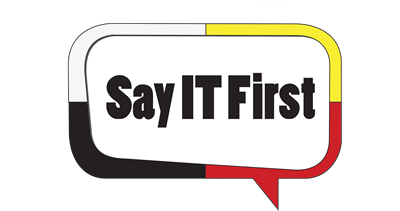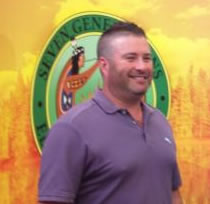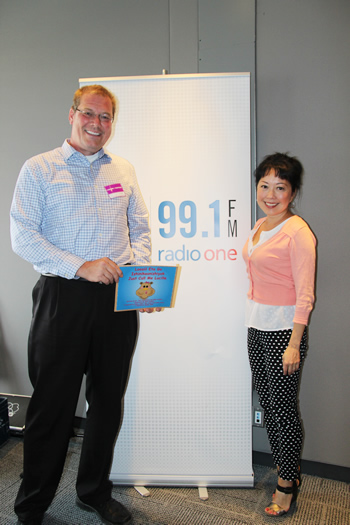It is estimated that, if nothing is done, half of the over 6,000 languages spoken today will disappear by the end of the 21st century. With the disappearance of unwritten and undocumented languages, humanity would lose not only an irreplaceable cultural heritage, but also valuable ancestral knowledge embedded, in particular, in indigenous languages.
Source: UNESCO.org
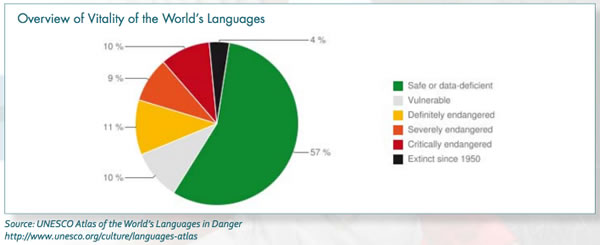
According to the UNESCO languages atlas, there are 87 languages in Canada that are endangered or vulnerable.
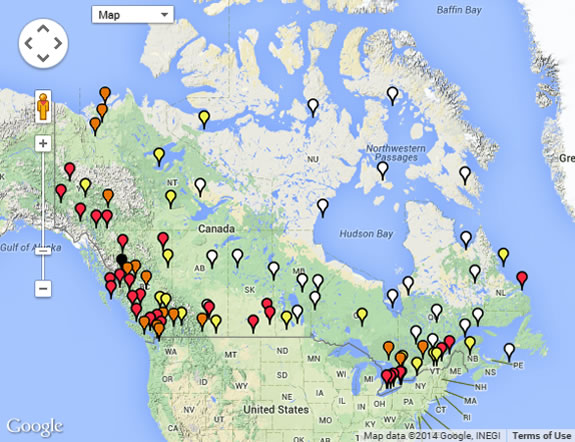
Source: Moseley, Christopher (ed.). 2010. Atlas of the World’s Languages in Danger, 3rd edn. Paris, UNESCO Publishing.
Online version:http://www.unesco.org/culture/en/endangeredlanguages/atlas
UNESCO’s Pillars of Language Revitalization:
In 2002/2003, UNESCO assembled an international group of linguists to develop a framework for determining the vitality of a language in order to assist in policy development, identification of needs, and appropriate safeguard measures. This group identified six factors to evaluate language vitality, two factors to assess language attitudes, and one factor to evaluate the urgency of the need for documentation. Taken together, these factors would determine the vitality of a language and the type of measures required for its maintenance or revitalization.
Source: http://unesdoc.unesco.org/images/0018/001836/183699E.pdf
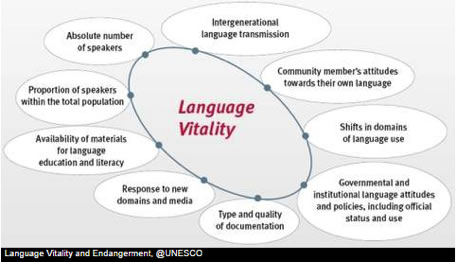
The six factors that evaluate language vitality are:
- Intergenerational Language Transmission – This is what is happening now on a very low scale. Grandparents teach parents and grandchildren the language using oral tradition. If a language is used by all ages, it is considered safe. If there are no speakers, it is extinct. Here is an illustration of the Degrees of Endangerment:
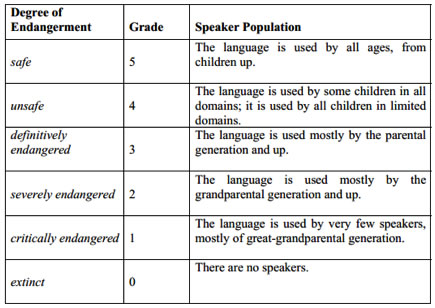
- Absolute Number of Speakers – How many people can fluently speak the language? This number is rapidly declining due to the passing of elderly members of communities who are the only speakers of the language. A small population of speakers is more vulnerable to decimation (e.g. disease, warfare or natural disaster) than a larger one.
- Proportion of Speakers within the Population – What proportion of the total population can speak the language? This is often very low and is typically measured in Degrees of Endangerment:
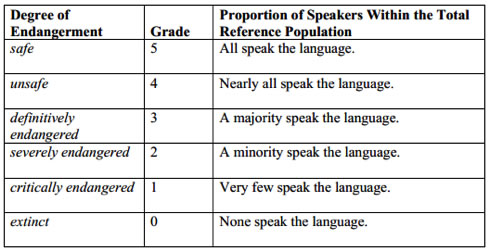
- Shifts in Domains of Language Use – Can the language be found in everyday places? E.g. at the store, on road signs, used at council meetings etc. Where is the language regularly practiced? If it is universally used for interaction, identity, thinking, creativity and entertainment, the language is safe. If the language is used in very restricted domains by very few individuals, it is extremely vulnerable to extinction.
- Response to New Domains and Media – Is the language being used in a modern way via computer, Internet or television? Where is the language heard, used and understood? How limiting is that for educational opportunities? In education, assigning criteria for determining Degree of Endangerment can be based on two dimensions: up to what level and how broadly across the curriculum the endangered language is used. For example, a language used as the medium of instruction for all courses and all levels will rank higher than a language taught only one hour per week.
- Availability of Materials for Language Education and Literacy – Where can the language be read? Is it incorporated in educational materials used at schools and day cares? How easily accessible is this material? How current is it? There are some communities with strong oral traditions who do not wish their language to be written. In other communities, literacy is a source of pride and is directly linked with social and economic development.
SayITFirst looks to these six factors as a guide when considering language development initiatives and revitalization projects.
